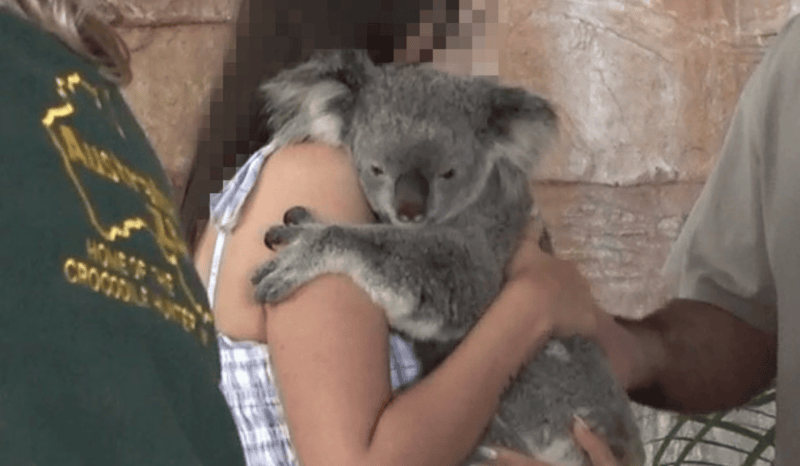
Tourists in Australia are lining up to “cuddle” the iconic koala, native only to the eastern and southern coasts of Australia. Though koalas resemble teddy bears, these nocturnal and solitary animals would prefer to keep their distance from humans.
Progress for Koalas in Queensland
In 2022, World Animal Protection released Too Close for Comfort, a report on Australia’s captive wildlife industry that highlighted the use of koalas for “cuddles” and selfies. Queensland is a hotspot for these exploitative encounters, with 27 venues offering koala experiences in 2022.
Now, three years later, our follow-up report, Still Too Close for Comfort, reveals that meaningful change is finally taking hold. Three major venues have ended koala holding (other interactions still occur): Lone Pine Koala Sanctuary, Kuranda Koala Gardens, and Hartley’s Crocodile Adventures.
Lone Pine is the world’s largest captive koala venue, housing 100 koalas. Before the switch, many of them were available for “cuddling” and holding experiences. Despite its name, Lone Pine is not a sanctuary. True sanctuaries never allow visitors to touch wild animals. In 2024, Lone Pine announced that it was ending “koala holds” due to “increasingly strong visitor feedback.”
Busting Myths About Wildlife Interactions
Businesses claim that allowing visitors to touch and interact with wild animals inspires support for conservation. Two decades ago, celebrity Steve Irwin argued that “when people touch an animal, the animal touches their heart. And instantly, we’ve won them over to the conservation of that species.” There is little scientific evidence to support this claim. Koala interactions are one of the most popular offerings at Irwin’s zoo in Queensland, yet the number of koalas in the wild in Queensland has dropped by half, and koalas moved from “vulnerable” to “endangered” in 2022.
Transforming the Tourism Industry in Australia
The progress made over the past three years is evidence that the Australian captive wildlife tourism industry is undergoing a transition, but more is needed. The industry must start planning for a near-term future where observation-only experiences of animals engaging in natural behaviors are the norm. Ultimately, the future of Australian wildlife tourism is only seeing wild animals in the wild, where they belong.
Before you book your next trip, download our free Animal-Friendly Travel Guide to ensure your getaway supports wildlife—not exploitation.